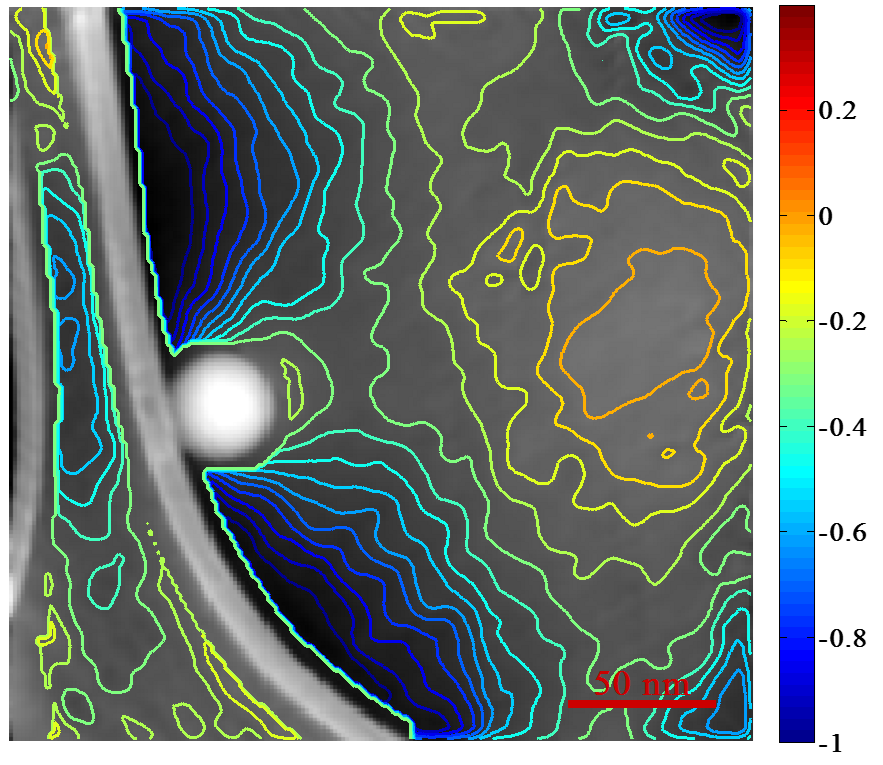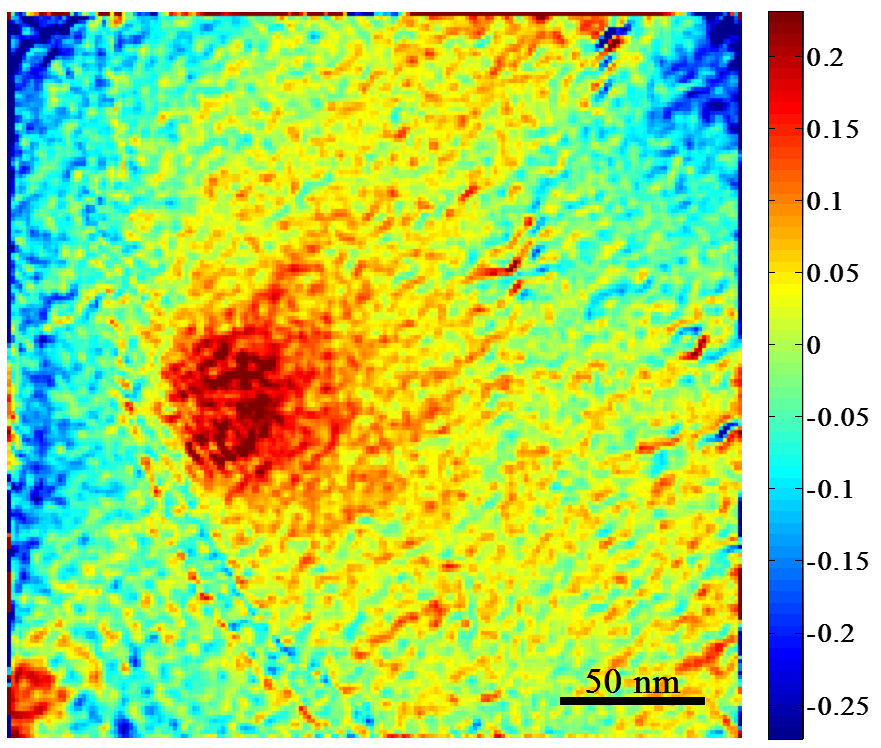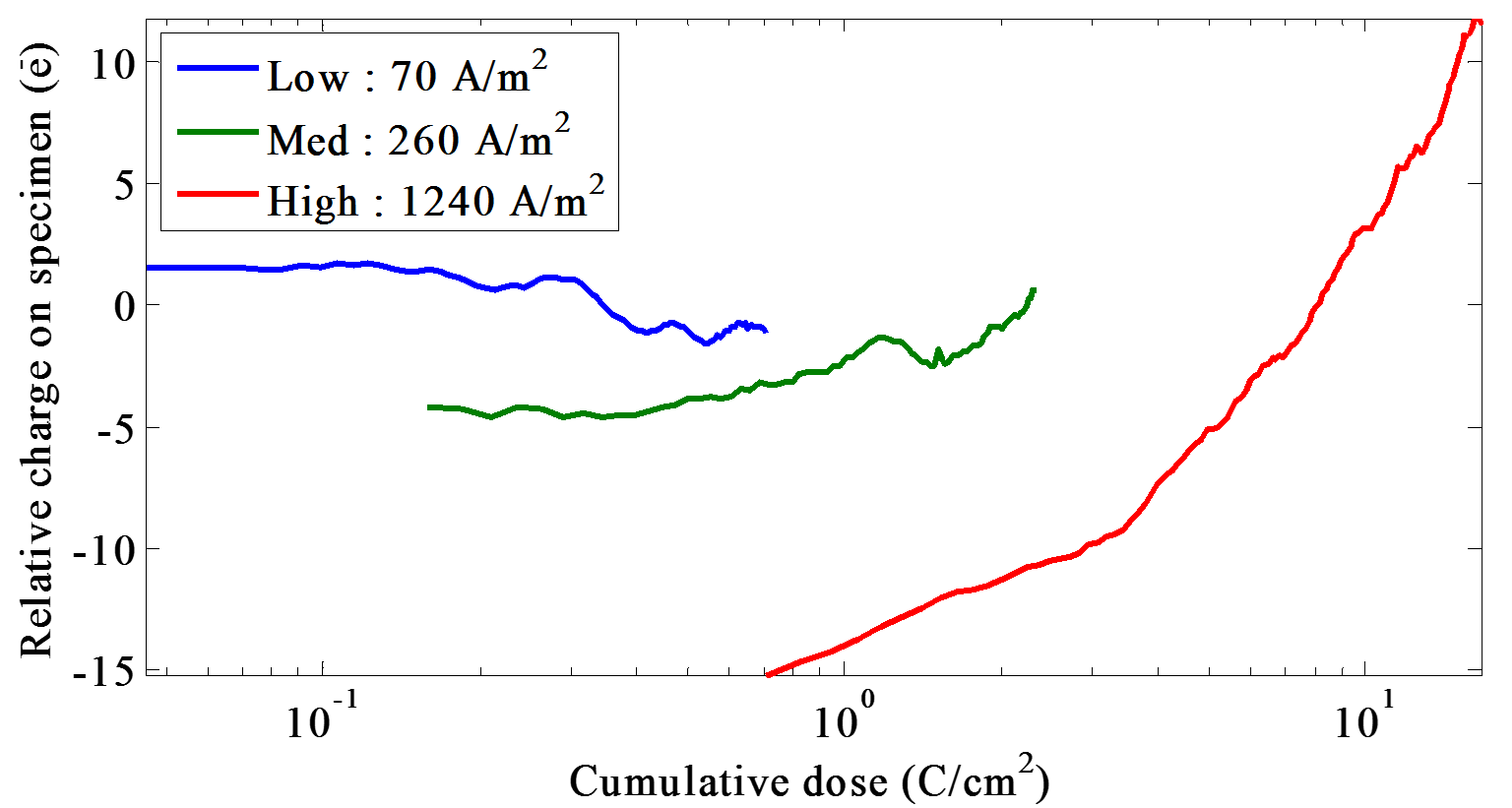IT-11-P-1954 Specimen Charging Measured by Off-axis Electron Holography
In off-axis electron holography, the acquisition of hologram series for the purpose of averaging is becoming popular to improve the signal-to-noise ratio. Image series can also be considered as a form of tomography, with the 3rd axis being time. In this case, a hologram series can measure dynamic electric and magnetic characteristics of a specimen.
Hologram series have a total exposure time of minutes. During this period, interaction with the electron beam will cause many secondary electrons to be emitted from the specimen. The generated holes are screened by the mobile charges and the dielectric response of the material, generating a screening Coloumb potential. If a metal is nearby, the potential is further screened by an image charge, resulting in a phase shift of dipole character. Thus the holes left-behind by SE emission constitute a form of radiation damage for phase retrieval techniques. The holes will be refilled at a rate determined by the conductance and morphology of the specimen. The hole half-life relative to the total exposure time governs the ultimate accuracy of the measured phase. The technique is expected to improve understand of charging behavior, especially in insulating specimens.
Here we have conducted experiments with a series of short exposure (0.25 – 0.5 s) off-axis holograms at 300 keV of latex nanoparticles on a lacey carbon support. The beam was initially blanked for ~15 minutes. Based on the Berriman effect, we expect the latex particle to only partially discharge over this time period. The beam was unblanked at the start of the hologram series acquisition. The experiment was repeated at three current density levels: high (1240 A m-2), medium (260 A m-2, shown in Fig. 1), and low (70 A m-2). The phase shift difference inside the particle boundaries between the start and end of the series measured for the high (0.8 rad) and moderate (0.2 rad, shown in Fig. 2) current densities. For the low current density series the phase error (~0.12 rad) was too high to directly estimate the phase shift. To estimate the charge on the latex particle as a function of dose, the vacuum projected potential was found from the rotational average of the vacuum phase around the particle. A least-squares best-fit to a model of a surface-charged sphere plus image charge yielded an estimate of the relative charge, as shown in Fig. 3. The measured phase is relative rather than absolute because the average phase of the entire series was used as a reference to remove fringing fields. The high and medium current densities charged the particle, whereas for the low current density there was actually discharge during illumination. The time-resolved behavior is visualized by videos, which will be shown at the conference.
RAM acknowledges the financial support of Fondation Nanosciences and CEA and MM the financial support of NINT. RF Egerton provided valuable discussion.


